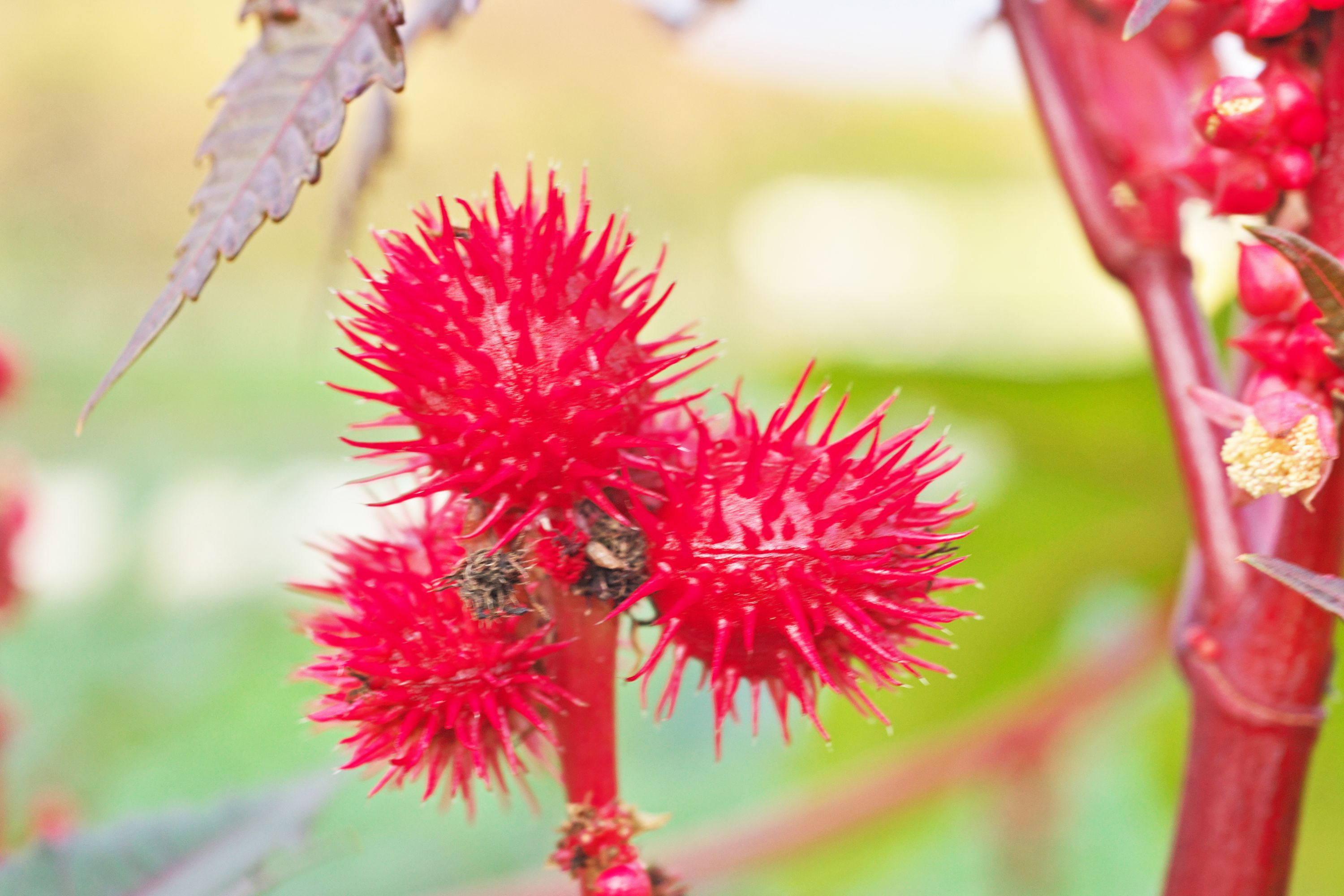Castor bean
(Ricinus communis)

Description
Ricinus communis, commonly known as castor bean, is a fast-growing, herbaceous perennial plant that is native to the Mediterranean region, eastern Africa, and India. It belongs to the family Euphorbiaceae and is grown for its ornamental value as well as for its industrial and medicinal uses. Description Castor bean is a tall, semi-woody, herbaceous plant that can grow up to 12 feet (3.6 meters) tall in a single growing season. Its stem is thick and fleshy, with a smooth and glossy surface that can range in color from green to purple. The leaves of the plant are large, palmately lobed, and can reach up to 2 feet (60 centimeters) in diameter. They are typically green in color, but can also be purple or variegated. The plant produces both male and female flowers on separate inflorescences. The male flowers are small and inconspicuous, while the female flowers are larger and develop into spiny, green seed capsules that contain the castor seeds. Growing Requirements Castor bean is a tropical plant that requires warm temperatures and ample sunlight to grow. It thrives in full sun and well-draining soil that is rich in organic matter. The plant is sensitive to frost and should be grown in areas with mild winters. It can be grown as an annual plant in colder regions, or as a perennial in warmer climates. Propagation Castor bean can be propagated by seed, which should be sown directly in the ground after the last frost. The seeds should be sown at a depth of 1 inch (2.5 centimeters) and spaced 3 feet (1 meter) apart. They typically germinate within 10 to 14 days and can reach maturity in as little as 3 to 4 months. The plant can also be propagated by stem cuttings or layering. Uses Castor bean has a wide range of uses, including: Industrial uses: The oil extracted from the castor seeds is used in the production of lubricants, paints, and varnishes. It is also used in the manufacturing of plastics, nylon, and synthetic rubber. Medicinal uses: Castor oil has been used for centuries as a laxative and purgative. It is also used to treat a variety of ailments, including constipation, skin disorders, and arthritis. Ornamental uses: Castor bean is grown for its ornamental value, with its large leaves and colorful stems adding interest to gardens and landscapes. Agricultural uses: The plant is used as a cover crop and as a natural pesticide due to its ability to repel insects and nematodes. Toxicity While castor bean has many useful properties, it is important to note that the seeds and leaves of the plant are highly toxic to humans and animals. The seeds contain ricin, a toxic protein that can cause severe poisoning if ingested. Symptoms of ricin poisoning include abdominal pain, vomiting, diarrhea, dehydration, and seizures. In severe cases, it can lead to organ failure and death. The toxicity of castor bean makes it important to handle the plant with care and keep it out of reach of children and pets. In conclusion, Ricinus communis, or castor bean, is a versatile and valuable plant with many industrial, medicinal, and ornamental uses. While it is important to be cautious of its toxicity, when handled properly, it can be a beautiful and beneficial addition to any garden or landscape.
Taxonomic tree:







